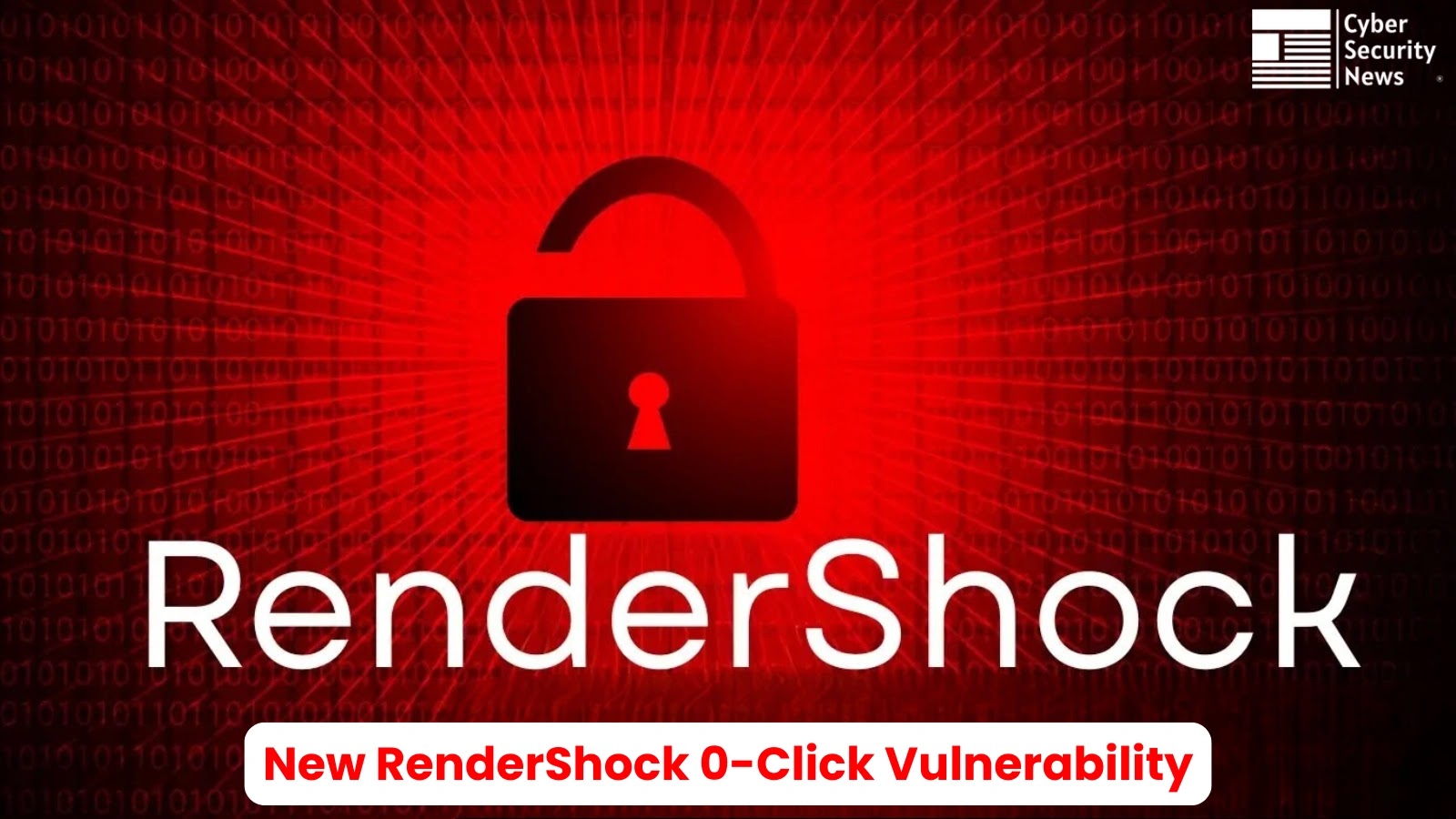
RenderShock 0-Click Vulnerability Executes Payloads via Background Process Without User Interaction
RenderShock: The Silent Threat of 0-Click Vulnerabilities
Imagine a cyberattack that doesn’t require you to click a dubious link, open an attachment, or even interact with a malicious file. This isn’t a plot from a sci-fi thriller; it’s the stark reality of sophisticated zero-click vulnerabilities. One such alarming methodology, dubbed RenderShock, has emerged, exploiting core operating system functionalities to deliver payloads with unprecedented stealth. This post delves into RenderShock, explaining its mechanism, potential impact, and crucial remediation strategies for IT professionals and security practitioners.
Understanding RenderShock: A New Era of Silent Compromise
RenderShock represents a significant evolution in attack methodologies. Unlike traditional phishing campaigns that rely on user error or social engineering, RenderShock bypasses the human element entirely. It leverages legitimate, built-in system automation features that many users take for granted: passive file preview and indexing behaviors.
Operating systems often generate thumbnail previews of files or index their contents in the background to improve user experience and search functionality. RenderShock weaponizes this automation. An attacker sends a specially crafted, malicious file (e.g., an image, document, or media file). When the operating system’s automatic preview or indexing service processes this file – even without the user explicitly opening it – a vulnerability within that service is triggered, leading to the execution of arbitrary code. This means compromise can occur simply by receiving or storing the malicious file in a directory that a system service monitors, all without any user interaction whatsoever.
How RenderShock Operates: Beyond the Click
The core mechanism of RenderShock lies in its ability to exploit vulnerabilities in services that operate in the background. Consider the typical workflow:
- An attacker crafts a malicious file, embedding an exploit payload within its structure.
- This file is then delivered to a target system. This delivery could be via email attachment (without requiring the user to open it), a file share, or even through applications that automatically download and process files.
- The operating system’s built-in services (e.g., Windows Explorer’s preview pane, macOS Quick Look, or desktop search indexers) initiate a background process to generate a thumbnail, extract metadata, or index the file’s content for search purposes.
- During this automated, non-interactive processing, the embedded vulnerability in the malicious file triggers, leading to code execution.
- The malicious payload runs in the background, potentially establishing persistence, exfiltrating data, or deploying ransomware, all without the user ever being aware of the compromise.
This 0-click nature makes RenderShock particularly insidious, as it renders traditional user awareness training largely ineffective against such an attack.
Potential Impact and Real-World Scenarios
The ramifications of a RenderShock-style attack are significant. Organizations could face:
- Ransomware Deployment: Payloads could encrypt critical data, disrupting operations and demanding ransom.
- Data Exfiltration: Sensitive intellectual property, customer data, or financial records could be stolen silently.
- Lateral Movement: Compromised systems could serve as beachheads for attackers to move deeper into the network.
- Erosion of Trust: A successful 0-click attack can severely damage an organization’s reputation and customer trust.
- Undetected Persistence: Since no user interaction is involved, these attacks might evade detection by traditional security measures that focus on user-initiated activities.
Remediation Actions and Mitigations
Addressing 0-click vulnerabilities like RenderShock requires a multi-layered security approach, focusing on defense-in-depth:
- Patch Management: Proactively apply all security updates and patches for operating systems, applications, and third-party software. Many 0-click vulnerabilities are resolved through vendor-supplied patches. Organizations should have robust patch management CVE-2023-38831 processes.
- Disable Unnecessary Preview/Indexing Features: Where feasible and without significant impact on productivity, consider disabling automatic file preview, thumbnail generation, or aggressive indexing services for certain sensitive directories or file types, particularly on critical servers.
- Endpoint Detection and Response (EDR)/Extended Detection and Response (XDR): Implement advanced EDR/XDR solutions that can monitor low-level system calls, process behaviors, and file system activity for anomalous patterns indicative of exploits, even in background processes. Behavioral analysis is key.
- Network Segmentation: Limit the blast radius of a potential compromise by segmenting networks. If a workstation is compromised, prevent attackers from easily moving to critical servers.
- Application Whitelisting: Restrict which applications are allowed to execute on endpoints. This can prevent unknown or unauthorized processes from running, even if an exploit is successful.
- Content Disarm and Reconstruction (CDR): Employ CDR solutions for inbound files, particularly those received via email or file uploads. CDR works by sanitizing files, removing potentially malicious elements while preserving the legitimate content, effectively disarming zero-day exploits.
- Secure Configuration Baselines: Implement and enforce strict security configurations for operating systems and applications, adhering to security best practices.
- Regular Security Audits and Penetration Testing: Conduct regular assessments to identify and address misconfigurations or vulnerabilities before they can be exploited.
Tools for Detection and Mitigation
Organizations can leverage various tools to enhance their defense against sophisticated threats like RenderShock:
| Tool Name | Purpose | Link |
|---|---|---|
| Mandiant Advantage/FireEye EDR | Advanced endpoint threat detection and response, behavioral analysis. | https://www.mandiant.com/advantage |
| CrowdStrike Falcon Insight | Cloud-native EDR, threat intelligence, and behavioral protection. | https://www.crowdstrike.com/products/endpoint-security/falcon-insight-edr/ |
| Palo Alto Networks Cortex XDR | XDR platform integrating endpoint, network, and cloud data for detection. | https://www.paloaltonetworks.com/cortex/cortex-xdr |
| OPSWAT MetaDefender Core | Multi-scanning and CDR for file-based threats. | https://www.opswat.com/products/metadefender/core |
| Microsoft Defender for Endpoint | Integrated endpoint protection platform for Windows ecosystems. | https://www.microsoft.com/en-us/security/business/threat-protection/microsoft-defender-for-endpoint |
| Tenable.io (Vulnerability Management) | Comprehensive vulnerability scanning and management. | https://www.tenable.com/products/tenable-io |
Conclusion: Adapting to the Evolving Threat Landscape
The emergence of attack methodologies like RenderShock underscores a critical shift in the cybersecurity landscape. Attackers are constantly innovating, moving beyond traditional user-centric exploits to target automated system behaviors. For organizations, this means a renewed focus on robust patching, proactive threat detection, and comprehensive endpoint security. By understanding the mechanisms behind 0-click vulnerabilities and implementing a proactive defense strategy, security teams can significantly enhance their resilience against these silent, potent threats.





